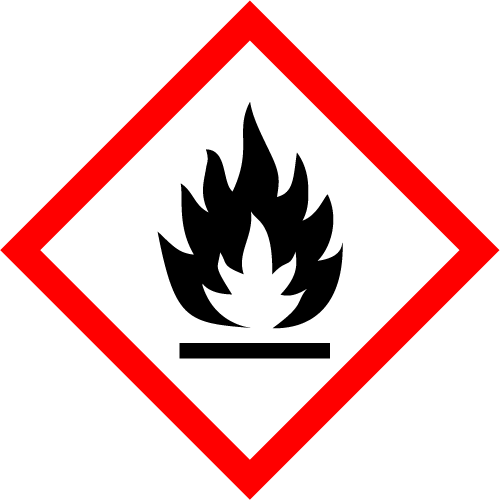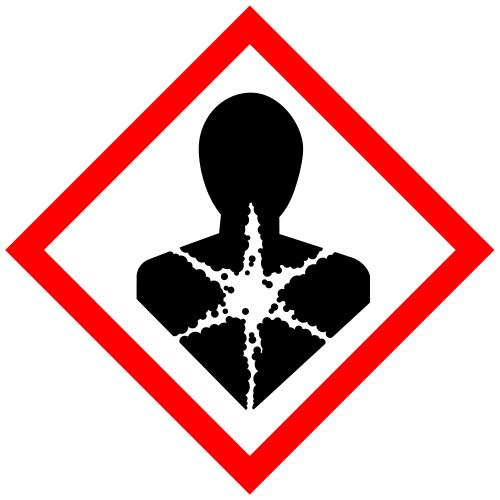Conservar Laropal A81 Varnish Kit
Conservar Laropal A81 Varnish Kit has everything needed to prepare a colorless, reversible varnish made from Laropal A81 resin dissolved in pure, aromatic solvent and UV stabilizer.
Conservar Laropal A81 Varnish Kit allows you to make varnish fresh to use when needed. The kit contains the following items:
Mineral Spirits (solvent)
Laropal A81 (varnish resin)
UV Stabilizer
Mixing jar
Pipette
Conservar Laropal A81 Varnish is a colorless, reversible varnish comprised of an aldehyde resin (Laropal A81) in an aromatic and aliphatic solvent blend with a UV light stabilizer. It can be used both as an isolating varnish and a final varnish.
Laropal A81 is a urea-aldehyde resin used to make pigment pastes and as a medium in conservation colors. Accelerated aging tests have shown Laropal A81 to be one of the most stable resins available for use as a varnish.* Even after extended exposure to xenon arc lamps, in conditions simulating direct sunlight, the resin remains soluble in a mixture of aliphatic and aromatic solvents similar in proportion to which the freshly prepared varnish dissolves. While some change of the resin occurs after it has aged, this change can be eliminated by adding a UV stabilizer,* which is included in Conservar Laropal A81 Varnish Kit.
Laropal A81 is insoluble in almost all purely aliphatic solvents, such as odorless mineral spirits, making it an ideal isolating varnish. It can be used with other varnishes applied as a distinct layer, for example, below Conservar Finishing Varnish or other varnishes. Conservar Finishing Varnish remains easily removable without harming the Conservar Laropal A81 Varnish in the layer below. Conservar Isolating/Finishing Varnish can be used as a final varnish that is less glossy than Conservar Finishing Varnish.
Conservar Laropal A81 Varnish has a slightly satin-like appearance compared to natural resin varnishes, such as dammar. It saturates colors and dammar but not quite as well as Conservar Finishing Varnish and is considerably less glossy.
Laropal A81 resin has a relatively broad molecular weight distribution (polydispersibility), giving it a pleasant feel or ‘brushability.’ When brushing, it has enough viscosity to give a feeling of control while it easily spreads out evenly. Its primary advantage is its relatively good leveling in a single application without the tendency to sink into matte areas of a painting.
* Rie, E.R. de la, Lomax, S.Q., Palmer, M., and Maines, C.A. 2002. An investigation of the photochemical stability of films of the urea-formaldehyde resins Laropal A81 and Laropal A101. In ICOM Committee for Conservation, 13th Triennial Meeting, Rio de Janeiro, 22–27 September 2002, Preprints. R. Vontobel, ed. Vol. II James & James:881–7.
Recommended Uses
Conservar Laropal A81 Varnish is recommended as both an isolating and a final varnish on the following paint films:
- Alkyd
- Oil
All varnishes do not work well with casein, distemper, egg tempera, gouache, watercolor, and drawings because the varnish will be absorbed by the paint and paper, becoming an integral part of the picture that could cause discoloration. In addition, varnishes on works created using casein, distemper, egg tempera, gouache, watercolor, and drawing cannot be removed.
It is not recommended to varnish casein, distemper, egg tempera, gouache, watercolor, and drawings because it does not function as varnish but becomes part of the paint film. This is the issue with almost all waterborne paints, such as casein, distemper, egg tempera, watercolor, and drawings. Hence we recommend applying an isolating varnish that becomes part of the paint film and then a final varnish of a different resin that can be removed without affecting the isolating varnish (and the paint film).
To varnish casein, distemper, egg tempera, gouache, watercolor, and drawings, apply Conservar Isolating/Finishing Varnish as an isolating coating on the painting or drawing first, then apply a final picture varnish, such as Conservar Finishing Varnish. This way, the final varnish can be removed without damaging the painting or drawing underneath. Remember, any isolating coating becomes a permanent part of the artwork since the paint layer absorbs it.
Coverage
Makes approximately four fluid ounces (118 ml) which covers approximately 80 square feet (7.4 square meters).
Directions
Before actual use, it is essential to test Conservar varnishes on test pieces to understand how they perform and how they alter the surface appearance of your paintings. For best results, apply to a test piece similar in composition to the artwork to be varnished. This will help ensure that a successful varnish application will be achieved.
How to Prepare
Remove all items from the package. Pour solvent into a jar with varnish resin. Close the jar tightly, shake and allow it to stand until completely dissolved (usually one to two days). Once dissolved and no remaining resin particles are visible in the jar, fill the pipette with solvent from the jar and release it into the small amber vial containing the UV stabilizer. Close the vial and shake until thoroughly mixed. Pour the solvent and stabilizer mixture into the jar. If the vial is not empty, draw any remaining liquid into the pipette and release it into the jar. Stir the contents of the jar well, and the varnish is ready to use. Best used within 30 days of combining ingredients.
When to Varnish
The best practice is to wait 6 to 12 months before varnishing with Conservar Laropal A81 Varnish. Oil and alkyd paint films need time (typically months) to polymerize and form a resilient film; otherwise, a coating added to an improperly cured film may cause the layers beneath to swell and loosen.
It may be possible to apply Conservar Laropal A81 Varnish when the thickest areas of your painting are dry through—not touch dry. To determine if your painting is “dry-through,” press into the thickest area of your painting with your thumb while twisting it a full 90° on the paint film. If your painting is on a flexible support, such as stretched canvas, support the opposite side. The paint is considered dry-through when no loosening, detachment, wrinkling, or other distortion is visible on the paint surface. This procedure is fully described in the ASTM Standard D1640: Standard Test Methods for Drying, Curing, or Film Formation of Organic Coatings at Room Temperature.
Please note, however, that the more the oil paint is allowed to polymerize or cure, the more likely the varnish application will be successful. Always test the application of varnish on test pieces first to determine the suitability of the varnish for your application.
Preparation for Varnishing
Acclimate your painting and varnish materials and tools to the same environment. At least several hours before varnishing, place all items, such as your painting, brushes, containers, and Conservar varnish, in the same room. Varnish in a dust-free environment with the least amount of air movement to avoid raising dust.
It is best to brush or spray and apply Conservar varnishes. Other methods, such as applying with paint pads, sponging, or rolling, are not recommended, as they may result in foaming, loss of film clarity, non-uniform coverage, excessive film build, sagging, or deposit of materials from the application tool.
Diluting
The varnish can be thinned to spray application or thin application by brush. Here is the correct solvent for Conservar Finishing / Isolating Varnish: Laropal Solvent.
Brush Application
Apply with a wide flat, soft-hair brush. Conservar Isolating/Finishing Varnish can be thinned up to 20% with high-flash mineral spirits containing at least 20% aromatics. DO NOT MIX WITH WATER. Apply only one coat as a final varnish when applying by brush. Allow to dry for three days, and wipe the varnished surface with a soft, lint-free cloth.
Spray Application
The best way to achieve an even varnish coating is by spraying. This is particularly true for impasto surfaces. Spraying is also a valuable technique for creating a matte surface. The size of the surface to be sprayed will determine the best type of spray equipment to use. Conservar varnishes can be sprayed from an airbrush, airless or air-pressure spray equipment, or a refillable aerosol spray can.
To prepare for spraying, make sure all equipment is free of dirt. Work in an area free of dust and dirt, and keep work off the ground when spraying. Spray two to four light, even coats instead of one or two thicker applications, allowing enough time for drying between coats (4 to 6 hours or until the surface is tack free).
Release the spray trigger when stopping the motion of the sprayer during application to avoid a buildup of varnish in one spot. Maintain a uniform distance from the surface, and avoid spraying in an arcing motion. Make straight passes across the work, changing direction once the spray has cleared the edge of the piece being varnished. Slightly overlap the spray pattern with each pass until the entire passage has been covered.
To achieve a more uniform spray application, turn the painting 90 degrees and apply the subsequent coat perpendicular to the previous one. A typical spray application lays down a film only 1/8 to 1/4 the thickness of a brush coat application. If maximum protection is required of the varnish layer, apply multiple coats.
Drying Time
When applying multiple coats (spray application only), allow 4 to 6 hours between coats. Inspect the surface for tackiness, which may mean the coat is not sufficiently dry. Let the varnish cure for several days before packing or transporting the painting. Avoid contacting the surface with packing materials, including glassine, bubble wrap, or any other plastic, during transportation and storage. NEVER STACK PAINTINGS, whether varnished or not.
Care and Storage
As Conservar varnishes are removable, it is essential that they not be painted over. Paint applied over the varnish would also be potentially removable and would pose a complex problem in conservation or restoration attempts.
Techniques for Reducing Gloss
There are several different ways to reduce the gloss of Conservar varnish:
Dilute the varnish with additional solvent before using.
Apply a thin coating. The thinner the coating, the lower the gloss.
Brush the varnish as it dries. If you brush the varnish surface as it is starting to set up, you will microscopically roughen the surface resulting in less gloss.
Apply the varnish by spraying.
If the varnished surface of your painting appears too glossy, you can apply a final coating of Conservar Wax. Rub on a thin layer of wax with a soft, lint-free cloth using small circular strokes. Allow the wax to dry overnight for the highest degree of matte. Let the wax dry for 4 to 6 hours to create a satin finish, then gently buff.
Cleanup
Clean all equipment immediately following the application. Clean brushes with mineral spirits, such as Stoddard solvent. Always make a test piece for your application and surface to ensure desired results.
Removal
Use a clean, soft, lint-free rag dampened with naphtha solvent or mineral spirits (Stoddard solvent). Gently rub the varnished surface and repeat the process until all varnish is removed. Do not use stronger solvents. Allow to dry, and reapply the Conservar varnish.
Recommended Solvent
Here is the correct solvent for Conservar Finishing / Isolating Varnish: Laropal Solvent.
Laropal is a registered trademark of BASF. Conservar is a trademark of Natural Pigments. Rublev Colours is a registered trademark of Natural Pigments.
| SKU | 540-35201 |
|---|---|
| Brand | Rublev Colours |
| Vendor | Natural Pigments |
| Processing Time | Usually ships the next business day. |
| Resin Type | Laropal |
Hazard Pictograms
 |  |  |
| GHS09: Flammable | GHS08: Health Hazard | GHS07: Exclamation Mark |
Signal Word: Danger
Hazardous Components
Distillates (petroleum), hydrotreated light
Hazard Statements
Flammable liquid and vapor.
Causes skin irritation.
Causes serious eye irritation.
May cause genetic defects.
May cause cancer.
May cause respiratory irritation.
May be fatal if swallowed and enters airways.
Precautionary Statements
If medical advice is needed, have product container or label at hand.
Keep out of reach of children.
Read label before use.
Keep away from heat/sparks/open flames/hot surfaces. No smoking.
IF SWALLOWED: Do NOT induce vomiting. Immediately call a POISON CENTER or a physician.
IF ON SKIN (or hair): Immediately take off all contaminated clothing. Rinse skin with water.
IF INHALED: Remove person to fresh air and keep comfortable for breathing. Call a POISON CENTER or a physician if you feel unwell.
IF IN EYES: Rinse cautiously with water for several minutes. Remove contact lenses, if present and easy to do. Continue rinsing.
Conforms to ASTM D4236.








